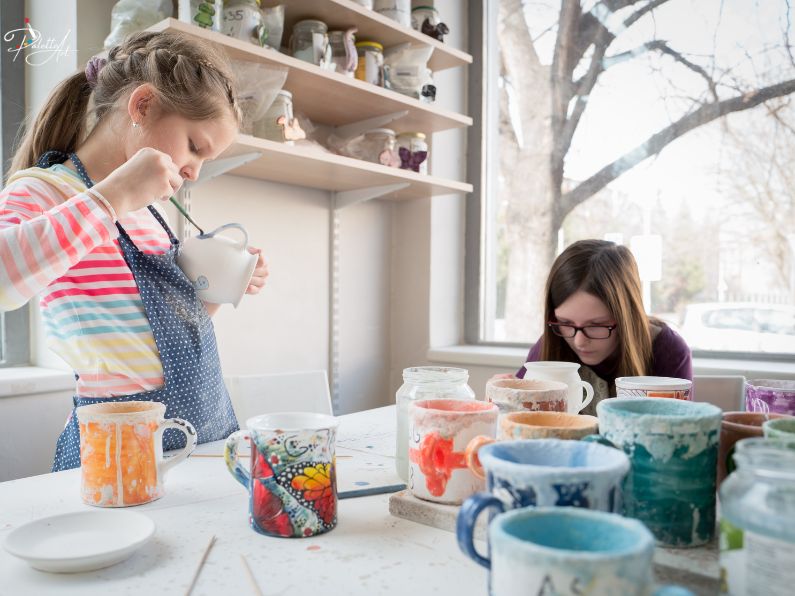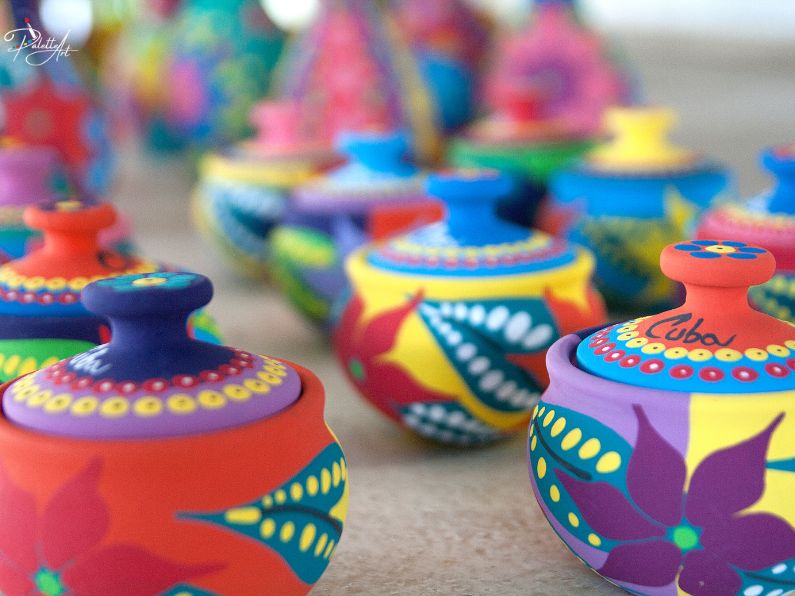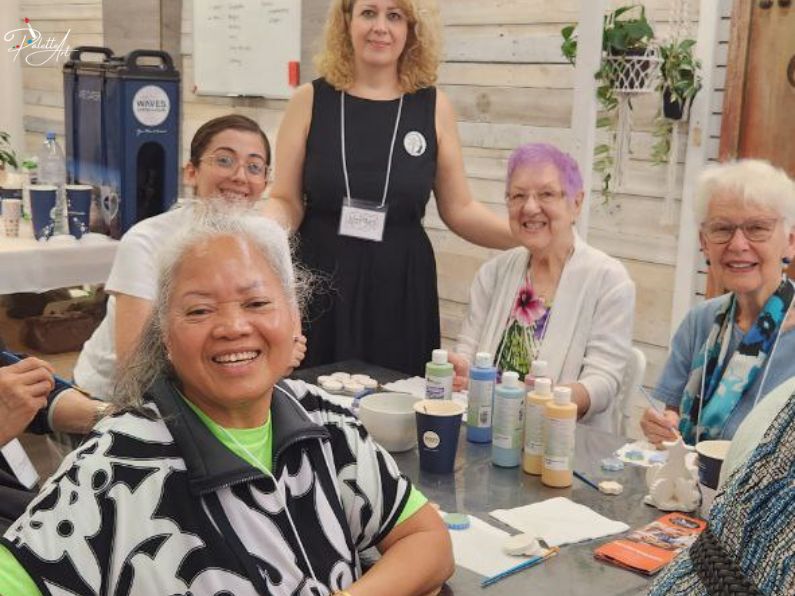Pottery painting involves decorating ceramic pieces using various techniques and tools. This art form has been practiced for centuries and continues to evolve with new methods. Learning pottery decoration basics is crucial for achieving professional-looking results.
Contents
- 1 The Art of Masking in Pottery Painting
- 2 Essential Tools for Masking Techniques
- 3 Step-by-Step Masking Techniques for Beginners
- 4 Understanding Resist Techniques in Pottery
- 5 Basic Resist Methods for Pottery Painting
- 6 Materials Needed for Resist Techniques
- 7 Combining Masking and Resist Techniques
- 8 Creating Intricate Designs with Masking
- 9 Simple Resist Patterns for Starters
- 10 Tips for Perfecting Your Pottery Designs
- 11 Common Mistakes to Avoid
- 12 Enhancing Your Skills: Advanced Techniques
- 13 The Importance of Practice and Patience
- 14 FAQs
- 15 Conclusion
The Art of Masking in Pottery Painting
Masking techniques in pottery painting are essential for creating clean lines and intricate designs. By covering certain areas of your pottery, you can apply different colors and patterns without them overlapping.
Essential Tools for Masking Techniques
To get started with masking techniques in pottery painting, you will need some basic tools:
- Masking tape: Perfect for straight lines and geometric patterns.
- Stencils: Ideal for repeating patterns and complex designs.
- Liquid latex: Useful for more flexible and intricate masking.
- Brushes: Various sizes for different levels of detail.
These tools help achieve precise designs and are integral to pottery decoration basics.
Step-by-Step Masking Techniques for Beginners
- Clean the Pottery Surface: Ensure your pottery is free of dust and grease to allow the paint to adhere properly.
- Apply Masking Tape or Stencil: Place the tape or stencil on areas you want to protect from paint. Make sure it adheres well to the surface.
- Paint the Exposed Areas: Use your chosen colors to paint the exposed sections, taking care not to let the paint seep under the tape or stencil.
- Remove the Masking Tape: Carefully peel off the tape or stencil to reveal your clean, sharp design once the paint is dry.
Palette Art also offers specialized pottery classes for both adults and children. Our Adult Pottery classes include hand-building and wheel-throwing techniques, perfect for anyone looking to develop their skills. For kids Pottery Class , we provide fun and educational pottery sessions where they can learn the basics of pinch, coil, and slab techniques, as well as painting and glazing. All tools and materials are provided, ensuring a comprehensive and enjoyable experience. Join us at Palette Art and let your creativity flourish!

Understanding Resist Techniques in Pottery
Resist techniques involve using materials that repel paint, allowing you to create unique patterns. These methods are perfect for adding depth and texture to your pottery.
At Palette Art, we offer an inviting and creative environment where you can explore the art of pottery painting. Whether you’re a beginner or an experienced artist, our pottery painting classes are designed to help you master masking and resist techniques while creating beautiful, personalized pieces. Sign up today and discover the joy of transforming plain ceramics into stunning works of art!
Basic Resist Methods for Pottery Painting
Basic resist methods include using wax, glue, or other materials to prevent paint from adhering to certain areas. These techniques are foundational to pottery decoration basics and can be easily mastered by beginners.
Materials Needed for Resist Techniques
- Wax resist: Applied to areas where you want to repel paint, creating clean lines and patterns.
- Glue resist: Similar to wax but offers different textures and finishes.
- Sponges: Used to apply resist materials or to create textured patterns.
- Brushes: For detailed application of resist materials.
Combining Masking and Resist Techniques
Combining masking and resist techniques in pottery painting allows for complex and detailed designs. By using both methods, you can create layers and intricate patterns that stand out.
Creating Intricate Designs with Masking
Advanced masking techniques taught in pottery painting workshops in Vancouver often focus on creating intricate designs. These workshops provide valuable hands-on experience.
Simple Resist Patterns for Starters
Starting with simple resist patterns, such as dots and stripes, can help you get comfortable with the technique. Dot painting pottery designs are particularly popular and easy to execute.
Tips for Perfecting Your Pottery Designs
- Practice Regularly: The more you practice, the better your designs will become.
- Experiment with Tools: Try different masking and resist tools to find what works best for you.
- Take Your Time: Rushing can lead to mistakes. Be patient and meticulous.
Common Mistakes to Avoid
- Not Cleaning the Pottery: Ensure your pottery is clean to avoid paint adhesion issues.
- Overlapping Colors: Be careful when applying colors to avoid unwanted overlaps.
- Removing Tape Too Soon: Let the paint dry completely before removing masking tape.

Enhancing Your Skills: Advanced Techniques
As you become more comfortable with basic masking and resist techniques, consider learning advanced masking techniques in pottery painting workshops in Vancouver. These can help you achieve professional-level designs.
For more information on art and cultural events in Vancouver, visit the City of Vancouver Arts and Culture page, which offers various resources and event listings.
The Importance of Practice and Patience
Practice and patience are key to mastering pottery painting. Don’t get discouraged; keep honing your skills and enjoy the creative process.
FAQs
What are the benefits of masking techniques in pottery painting?
Masking techniques allow for precise, clean lines and the ability to create intricate designs by protecting areas of the pottery from paint.
What materials can be used for resist techniques in pottery?
Common materials for resist techniques include wax, glue, and liquid latex, which repel paint to create unique patterns.
Can I combine masking and resist techniques in one project?
Yes, combining both techniques can result in complex, layered designs that are visually striking.
How do I avoid overlapping colors when using masking techniques?
Ensure each layer of paint is fully dry before applying the next color and carefully apply masking tape to protect areas from overlap.
What are some common mistakes to avoid in pottery painting?
Common mistakes include not cleaning the pottery surface, removing masking tape too soon, and allowing colors to overlap unintentionally.
Where can I learn advanced masking techniques?
Advanced techniques can be learned through pottery painting workshops and classes, such as those offered in Vancouver, which provide hands-on experience and expert guidance.
Conclusion
Pottery painting is a rewarding and creative activity that can be enjoyed by beginners and experienced artists alike. By mastering masking and resist techniques, you can create stunning, professional-quality designs. Remember to practice regularly, experiment with different tools, and be patient with your progress. Happy painting!


